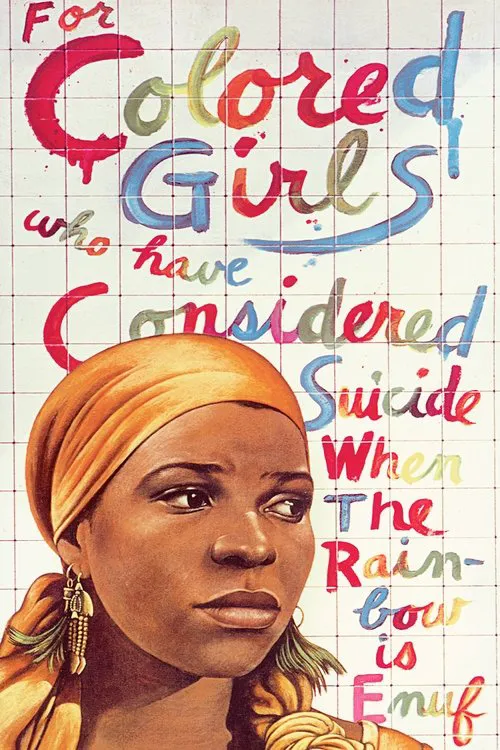For Colored Girls Who Have Considered Suicide / When the Rainbow Is Enuf

Plot
In the groundbreaking production of "For Colored Girls Who Have Considered Suicide / When the Rainbow Is Enuf," seven African-American women share their deeply personal tales of resilience and struggle in the face of an America marked by racism, violence, and oppression. This 1982 masterpiece, written by the celebrated poet and playwright Ntozake Shange, offers a powerful exploration of the lives and experiences of these women, weaving a tapestry of emotions that both celebrates their individual strength and highlights the societal injustices they face. The play is structured as a collage of poetry, music, and dance, each character a distinct voice speaking to the audience with raw honesty and unbridled emotion. Each woman's story is intertwined, forming a complex narrative that explores themes of love, loss, and the struggle for survival in a world that often seems determined to break them. The first character, Lady in Red, recounts a tale of love and betrayal, her voice a fiery outpouring of emotion as she speaks of being exploited and abandoned by the man who claimed to love her. Her is one of the most poignant and powerful of the seven women, her words a testament to the crushing weight of societal expectations on black women's lives. In contrast, the Lady in Yellow exudes a sense of confidence and strength, her words a defiant declaration of her own worth and the beauty that she possesses, despite the dehumanizing forces that seek to reduce her to nothing more than a commodity. Her performance is a testament to the enduring power of femininity, a celebration of the body and its beauty that stands in stark contrast to the more somber tales told by other characters. The Lady in Purple, meanwhile, offers a haunting and poignant exploration of the struggle to maintain a sense of identity and purpose in a world that often seems determined to erase one's very existence. Her words are a powerful lament, a cry of pain and despair that echoes through the audience and resonates deep within the soul. The other four women - the Lady in Blue, the Lady in Orange, the Lady in Green, and the Lady in Brown - each offer their own unique perspective, their words a testament to the diverse experiences and struggles of black women in America. Together, they form a vibrant and living tapestry, a rich and complex exploration of the black female experience that is at once both deeply personal and universally relatable. Throughout the play, Shange's innovative use of language and form serves to evoke the sense of urgency and desperation that underlies each character's narrative. Her use of short bursts of poetry, punctuated by moments of silence and introspection, creates a sense of fractured narrative that echoes the disjointedness and sense of dislocation that often characterizes the lives of black women in America. Yet for all its raw emotion and unflinching honesty, the play ultimately offers a message of hope and resilience. Despite the crushing weight of societal oppression, these women refuse to be broken, their words a testament to the enduring power of love and sisterhood in the face of overwhelming adversity. Theirs is a story of survival, of resistance, and of the human spirit's capacity to overcome even the most daunting challenges. Ultimately, "For Colored Girls Who Have Considered Suicide / When the Rainbow Is Enuf" is a landmark play that transcends the boundaries of time and place, speaking to the shared experiences of women across cultures and continents. Its powerful exploration of black women's lives and struggles serves as a reminder of the enduring importance of their stories, and the ongoing need for a platform that allows their voices to be heard and their experiences to be celebrated.
Reviews
Recommendations


